“James, I’m from a big city and interested in American architecture, not the soviet style architecture of the last 70 years. Of course, much of this architecture is now in areas inhabited by violent actors. When working in such areas, are there any survival tips you could disclose?”
-Hansel Miller
Hansel, I once tried my hand at photography in 1998 and the vulnerability of the act gave me the creeps. As a writer I can look at the world as a hunted animal or as a hunter and then record my impressions and observations from memory. But while squinted through a tiny hole in a little box one suffers from the binocular vision of the predator but in a passive capacity, with no peripheral vision. You can see my photos in The Logic of Steel and When You’re Food. I tossed the camera after that.
First we must assess your risks.
-You will be in high crime areas
-You will be behaving like a nosey cop in proximity to ongoing criminal enterprises.
-The inhabitants will be largely of ethnicities hostile to your ghostly pallor.
-You will be occupied with a threatening device that has no potential as a weapon, like waving round a toy gun painted black.
-Your threatening device is also of value, its battery alone bringing enough money to get high.
-You will be operating in areas frequented by corrupt police who might take umbrage with your presence.
I have interviewed a number of people who have gotten in trouble taking photos, Banjo, a man like yourself, documenting American decline, and a housing inspector who was circling behind a condemned building to document the damage when he ran into a dozen homeboyz rolling dice, who immediately picked him for an investigator and became threatening until he offered to take all of their pictures…
Let’s address specific risks:
You are in a dangerous area so never take the camera out until you have decided on a specific shot, then take that shot and retire the camera, for it is your greatest risk factor.
You will be around bad people, including corrupt pigs and petty crooks, so drill aborting a shot. Any time a person gets within 21 feet of you, put the camera away and move off at an angle, past them, not away from them. Get behind them so that a change of direction towards you will confirm the threat. You must take judgment out of the equation as your judgment is focused on photography, which is the main problem. So, any time a person comes within 21 feet you stow the device, whoever it is and move off at an angle, never in the same direction of their progress.
Do not photo near police precincts, court houses, jails, prisons, drug corners, high schools, junior high schools, stash houses or biker club houses. These are all places frequented by dangerous criminals.
Carry your camera or other device in a left-side pocket, case or pouch, preferable a simple slide arrangement that requires one smooth one-handed move to deploy or retire the camera.
You need a weapon that is explainable in blue municipalities with anti-survival statutes. In your right pocket or on your right side, you should have a hand umbrella that is never used for rain shedding but as a hand club. A good alternative would be a collapsible steel camera tripod or mount. The short blunt instrument is an excellent survival tool so long as it is an explainable object being borne for a legitimate purpose [self-defense is not legal activity, but rather the breaking of the law in hopes of an after-the-fact exemption] and not modified for effect.
Lastly, unless you want a bad experience down the road, do yourself a favor and always approach photography as if you are a spy documenting the activity of a narco cartel, because you just might be accidentally doing exactly that.
Waking Up in Indian Country: Harm City: 2015


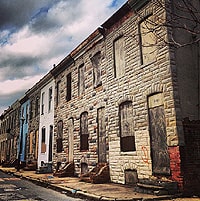

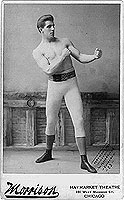


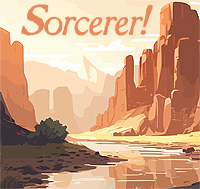
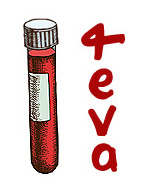
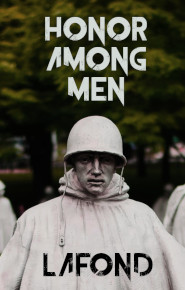

To add to the aforementioned advice, get a point and shoot. Be careful with a large slr for two reasons: First it marks you as a person whom may document things that people don't want documented including both ne'er do wells and police. Second it can mark you as a tourist/hipster/dummy ripe for a mugging as an expensive leica or whatever can be sold quickly on craigslist without questions. In otherwords there is no guesswork as to whether the mugging will end with only some change but guarantees a few hundred bucks no matter what.
One of the best cameras for this work was the Yashica T4. The reason is that it has a quiet shutter and it has a waist level view finder so one can hold the camera at waist level and frame the shot. This manner of taking a shot is not recognized as the common holding the camera up to the eye pose. Therefore people often do not think you are taking a picture but just fiddling with your camera while holding it waist level. A quiet shutter is important because if you take a quick shot with a loud shutter it can attract attention from people who are not even looking at you. When they see the camera they have no idea if you took their shot and can get testy. The prices on the t4 are outrageous now but there are others. I often use the Olympus Stylus Epic (Not the zoom model) which is smaller than the t4 but it has a louder shutter, no waist level view finder and one must manually turn the flash off each time it is turned on. Which reminds me to be very aware of your flash. Nothing is worse than trying to get a subtle shot and the flash going off. At a distance everyone knows you took a picture.
Look at some monopods instead of tripods. They will be easier to wield and carry. There are some that are also walking sticks and some made out of wood instead of aluminum. These might not go over too well in a place like NYC but westerly cities like Denver it might work. There is a polymer tripod that is non collapsible and made out of a polymer that might suit dual purposes but I can't remember if it was solid enough. You might even make a short stick monopod by putting a camera mount screw on top of a stick but this might be too obvious.
Also, always keep moving. Take a shot and go. Don't stand there after taking a couple shots on a digital camera and scroll through to see if they are good enough. Check later (not a problem if you are using film), if the photo sucked figure out why and make a second trip some other time. Don't spend 5 minutes trying to frame in a picture in a dangerous place. Additionally you can time your walk by a place so that you get there when there is a small break in foot traffic to take the shot. Also learn to index with your camera with your finger or body just as in pistol point shooting so you don't always have to take it to your eye if you don't have a waist level viewfinder.
Good luck.
Thanks a lot for the photography specific tips.
Drone Zone?
I cover that in Skulker Jones.